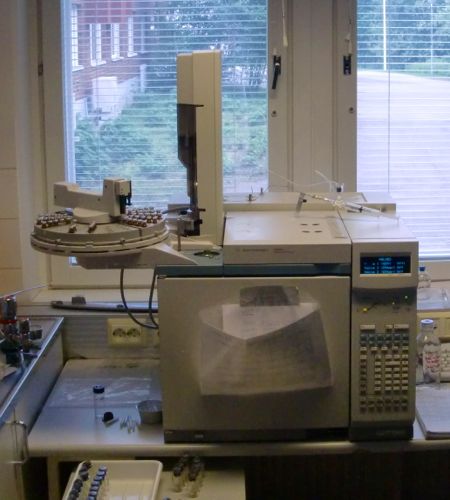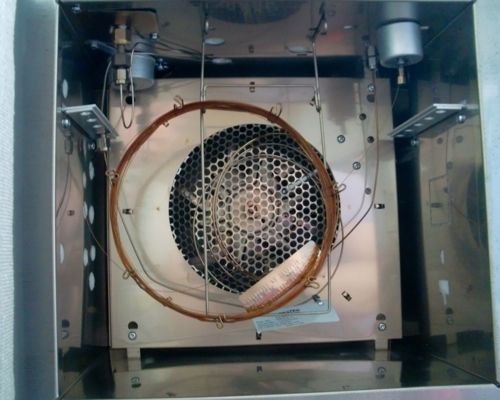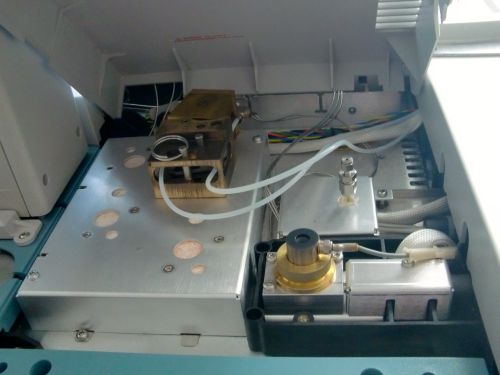I am continuing the explanation from yesterday's journal post about how a gas chromatograph works to help you determine what specific type of gas molecules (carbon dioxide or methane, for example) are in a mixed gas sample. It will also give you information from which you can determine how much of a specific gas is in that mixed sample. I did a little editing on yesterday's post to hopefully make it more clear, so please feel free to read that explanation again before continuing!
The Machine Itself
I forgot to introduce you to our machine itself. There are many different types of gas chromatography machines. This is the kind that METLA has.

Remember that the gas sample is injected into the column. This is comprised of many coils through which the gas molecules move. Depending mainly on size, the molecules of some compounds travel faster than the molecules of other compounds.

As the different gas molecules leave the end of the column at different times, a detector picks up the electrical signal from the electrons of the molecules. The METLA lab gas chromatograph has two detectors, visible when you lift the top of the machine:

Operating the Machine
First you need to load a syringe with 6 milliliters (ml) of your mixed gas sample. Then you slowly inject those 6 ml into what is called the "loop" of the machine. This flushes out the previous sample. When you have only half a milliliter of gas left in the syringe, you push the "on" button.
The 'thunk' that results from pushing the "on" button signifies a change in connections within the machine. This change causes the last 1milliliter of your mixed gas sample to enter the carrier stream of helium. This carrier stream of helium, which has been flowing through the column all along, now flushes the 1 ml sample through the column. As noted previously, the different types of molecules within the mixed sample separate out as they take different times to flow through the column. Each type of gas molecule has its own "retention time," or time it spends in the column.
http://
As you can tell, explaining the process is a lot more complicated than actually operating the machine!
That clicking you hear? The machine makes it. Believe-it-or-not, when you are focused on the process of running the samples, you tune it out. When you are not working however, it is really noticeable!


Comments